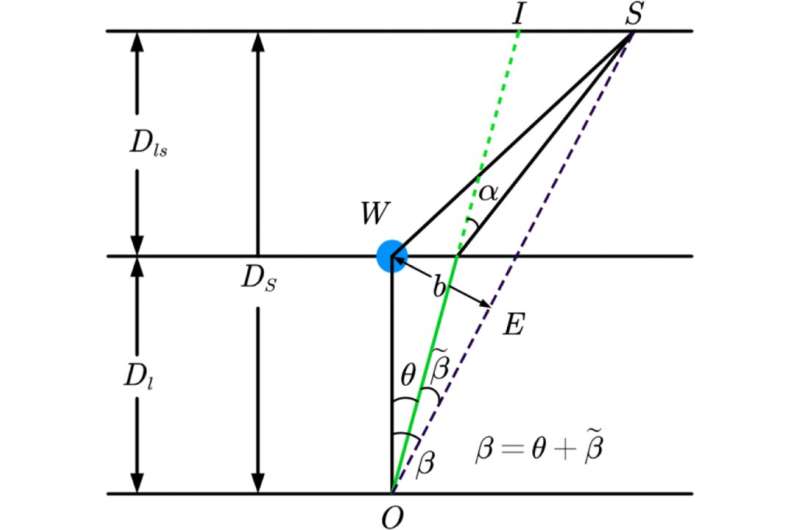February 8, 2023 report
This article has been reviewed according to Science X's editorial process and policies. Editors have highlighted the following attributes while ensuring the content's credibility:
fact-checked
peer-reviewed publication
trusted source
proofread
If wormholes exist, they might magnify light by 100,000 times

A small team of astrophysicists affiliated with several institutions in China has found evidence that suggests if wormholes are real, they might magnify light by 100,000 times. In their paper published in the journal Physical Review Letters, the group describes the theories they have developed and possible uses for them.
Prior theoretical efforts have suggested that wormholes might exist in the universe, described as tunnels of a sort, connecting different parts of the universe. Some in the physics community have suggested that it may be possible to traverse such tunnels, allowing for faster-than-light travel across the universe. The researchers note that prior research has shown that black holes have such a strong gravitational pull that they are able to bend light, a phenomenon known as microlensing. They then wondered if wormholes, if they exist, also exhibit microlensing.
Proving that wormholes cause microlensing would, of course, involve first proving that wormholes exist. Still, the researchers suggest that general relativity and other theories could clarify whether the idea is even possible. In their work, they discovered that it was possible to calculate how an electric charge associated with a wormhole would warp the light passing by it. They also found theoretical evidence that wormhole microlensing would be similar to black hole lensing, which, they note, would make it difficult to tell the two apart.
The group noted also that prior research has shown that black holes can split the light that moves past them, producing different numbers of copies of an object situated behind them. The math for a wormhole, on the other hand, suggests that it would only be able to generate three copies of an image behind it—two that were alike and dim, and a single bright one. And if such copies do exist, they hold the possibility of huge magnifications—the researchers' calculations showed magnification by as much as 100,000 times—far more than is the case for black holes.
This difference, they suggest, could be a way to differentiate black holes and wormholes. They also note that if their theory is correct, wormholes might be a new tool for studying objects that are too far away to be seen using other methods.
More information: Lei-Hua Liu et al, Microlensing effect of a charged spherically symmetric wormhole, Physical Review D (2023). DOI: 10.1103/PhysRevD.107.024022
On Arxiv: Lei-Hua Liu et al, Microlensing effect of charged spherically symmetric wormhole, arXiv (2022). DOI: 10.48550/arxiv.2207.05406
Journal information: arXiv , Physical Review D , Physical Review Letters
© 2023 Science X Network




















